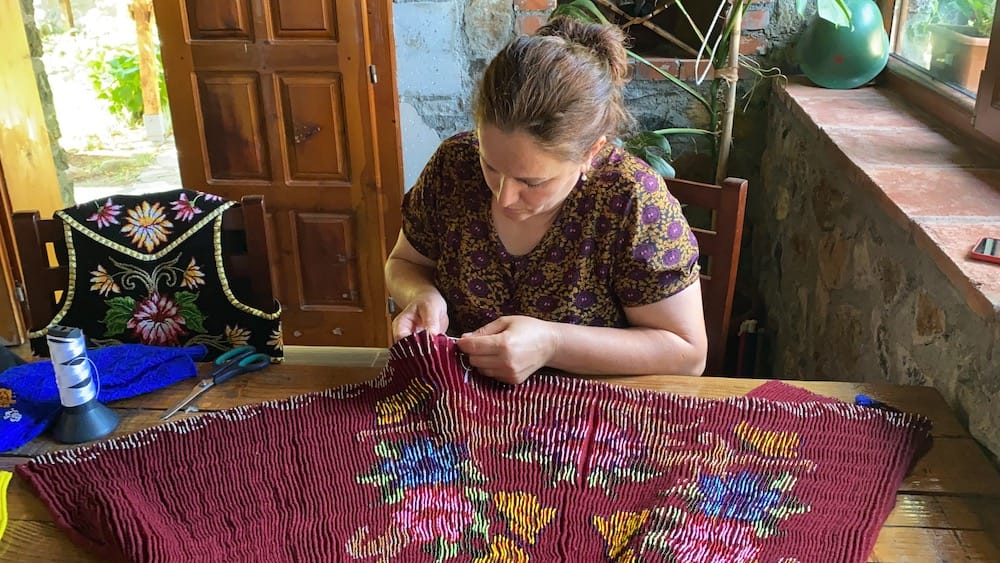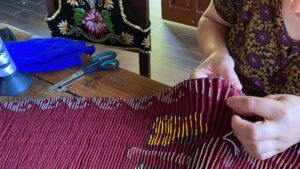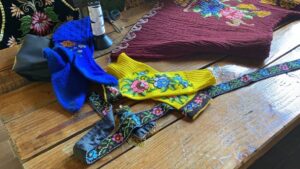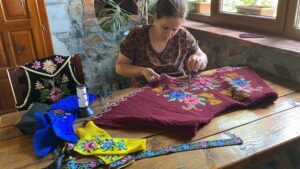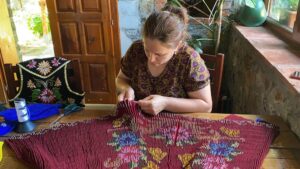Kanac dressing is one of the typical garments home to Puka tradition clothing design.
This clothing was originally characteristic of the Muslim population in Kabash village of Puka. Yet, religious differences have blurred in this regard as even the Catholic population make this very harmonious folk dress.
The elements of this clothing are:
Shirt. It used to be made of wool, but today it is made of cambric (white cotton). It consists of 4 parts – two sleeves, the front, and the back. The sleeves are three-quarters length. This shirt is embroidered with flower patterns, beads, and colorful threads.
Krahca. It is a part of the shirt featuring a close-fitting covering. The forearm adapts to the three-quarter and wide sleeves shirt. Krahca is crocheted and embroidered with colorful beads arranged in various motifs, adjusting them to one’s own choice. The basic colors are: green, red, blue, white, and purple.
Jelek. Otherwise known as “mitan”. The mitan fabric is made of black calico. This garment is made up of 3 parts, namely 2 front parts and 1 back part. Embroideries feature floral patterns and geometric shapes in multiple colors, both front, and back.
Belt. It is about 5 cm thick. Embellished with multicolored beads, in multiple design patterns, especially floral ones. The belt beads are stitched on the 2 cm thick fabric, which is equally sized to the waist circumference of the woman wearing it.
Kanaci. Is a red dressToday it is worked with knitting needles as vegët (four-legged wooden loom) are out of use. Before pleated, the length of kanaci should go round the woman three times, but sometimes it is shorter. Kanaci is made up of two or three panels, depending on the body size. The first step is doing the pleats by folding the fabric and spacing the pleats about 1 cm apart from each other and pinning them. To preserve the pleats, the fabric is dipped in boiled water with chemical fertilizer, salt, and lemon juice. The next phase regards the embroidery of floral patterns.
Socks. Made with knitting needles and to suit to the foot size, in white, red, purple, and pink. They are embellished with geometric patterns.
Yellow riza (headscarf). It is crocheted and worked with tassels, with no embroidery.

